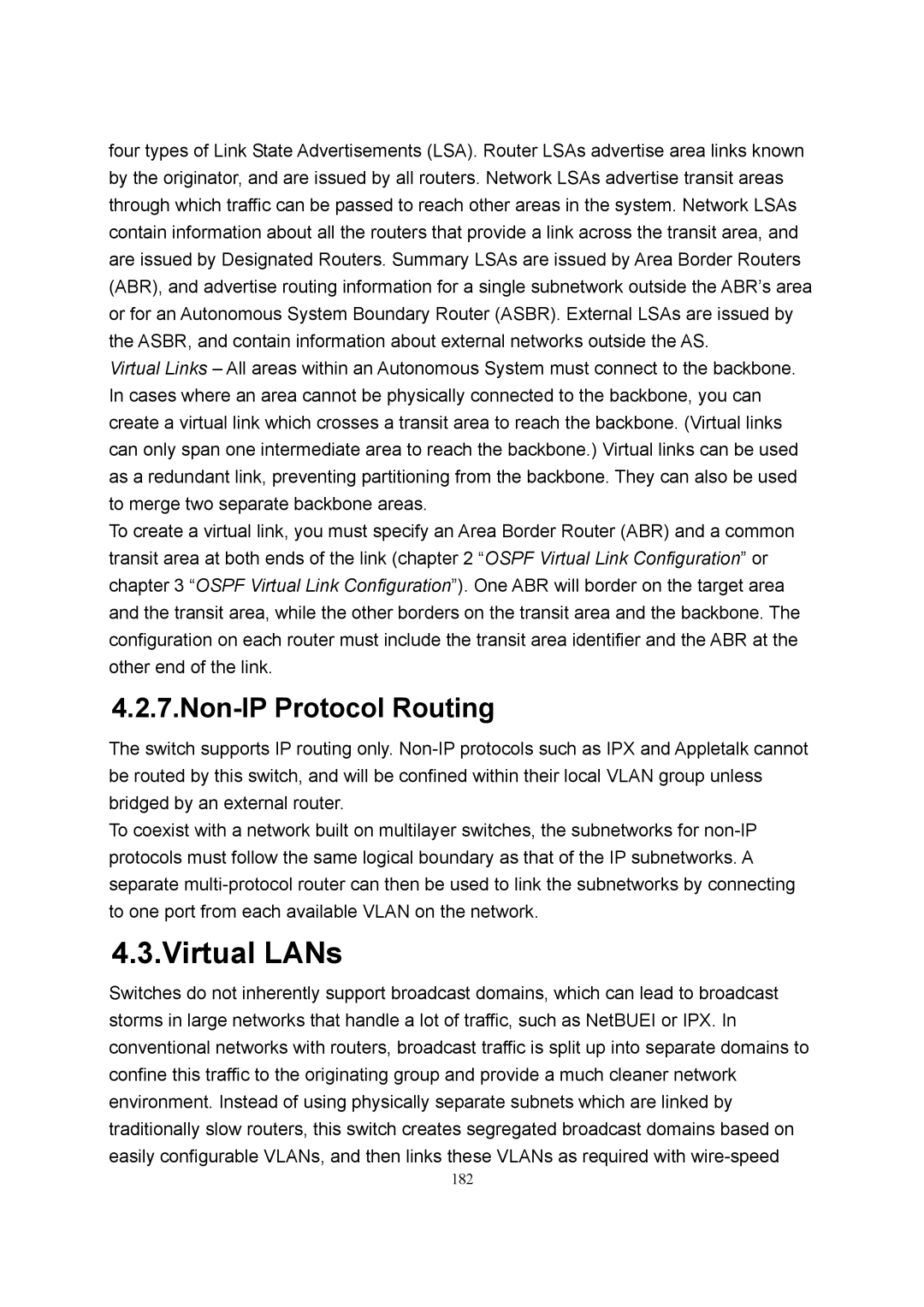four types of Link State Advertisements (LSA). Router LSAs advertise area links known by the originator, and are issued by all routers. Network LSAs advertise transit areas through which traffic can be passed to reach other areas in the system. Network LSAs contain information about all the routers that provide a link across the transit area, and are issued by Designated Routers. Summary LSAs are issued by Area Border Routers (ABR), and advertise routing information for a single subnetwork outside the ABR’s area or for an Autonomous System Boundary Router (ASBR). External LSAs are issued by the ASBR, and contain information about external networks outside the AS.
Virtual Links – All areas within an Autonomous System must connect to the backbone. In cases where an area cannot be physically connected to the backbone, you can create a virtual link which crosses a transit area to reach the backbone. (Virtual links can only span one intermediate area to reach the backbone.) Virtual links can be used as a redundant link, preventing partitioning from the backbone. They can also be used to merge two separate backbone areas.
To create a virtual link, you must specify an Area Border Router (ABR) and a common transit area at both ends of the link (chapter 2 “OSPF Virtual Link Configuration” or chapter 3 “OSPF Virtual Link Configuration”). One ABR will border on the target area and the transit area, while the other borders on the transit area and the backbone. The configuration on each router must include the transit area identifier and the ABR at the other end of the link.
4.2.7.Non-IP Protocol Routing
The switch supports IP routing only.
To coexist with a network built on multilayer switches, the subnetworks for
4.3.Virtual LANs
Switches do not inherently support broadcast domains, which can lead to broadcast storms in large networks that handle a lot of traffic, such as NetBUEI or IPX. In conventional networks with routers, broadcast traffic is split up into separate domains to confine this traffic to the originating group and provide a much cleaner network environment. Instead of using physically separate subnets which are linked by traditionally slow routers, this switch creates segregated broadcast domains based on easily configurable VLANs, and then links these VLANs as required with
182
